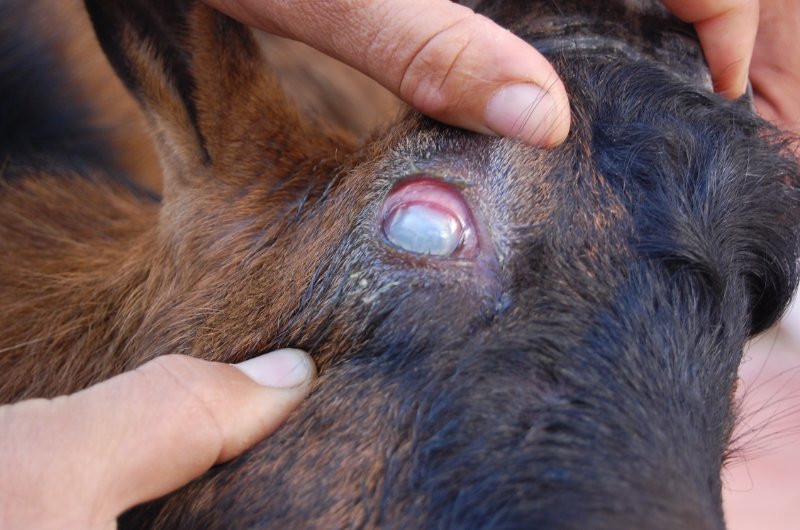Infectious bovine keratoconjunctivitis, IBK or pinkeye, is an infection of cattle caused by Moraxella bovis, a Gram-negative, β-haemolytic, aerobic, rod-shaped bacterium. It is spread by direct contact or by flies serving as vectors. It is the most common ocular disease of cattle (mostly beef). IBK causes severe infection of the conjunctiva, edema, corneal opacity and ulceration.
“Pinkeye is highly contagious and occurs worldwide. Prevention, environment control and quick diagnosis are essential to protect the herd.” John Buttery, CEO Anivax, Tucson, AZ

Image/Anivax
Pinkeye, as the name describes, is a redness and inflammation of the lining of the eyelid and eyeball. When infected, the eye of the cattle turns pink and causes inflammation in the cornea (the clear outer layer) and conjunctiva (the pink membrane lining the eyelids) of the eye. It causes swelling and the redness of the eye and apart from the pinkness of the eye, it also causes ulceration in the eye which can be seen as a hole or fall in the cornea.
One or both eyes may be involved. Excessive weeping of the affected eye and closure due to pain are the two signs most commonly observed. As the disease progresses, the cornea becomes cloudy or white. An ulcer (eroded circular spot) frequently develops near the center of the cornea.
Cattle with pinkeye keep the affected eye or eyes closed because of pain and to avoid bright sunlight. They lose weight because they are reluctant to forage for feed and water. The course of the infection may run for 4 to 8 weeks, or even longer.
As the eye begins to heal, white scar tissue infiltrates the cornea. In most cases this scar will gradually disappear as healing progresses and vision will be restored. However, in severely affected eyes, a white scar often persists and interferes with vision. If the ulceration is severe enough to penetrate all layers of cells forming the cornea, the fluid in the eyeball will escape. This results in the iris and/or lens protruding partially or entirely through the ulceration. If this occurs, there will be permanent blindness in the affected eye.
Eye infection in cattle is most commonly caused by the flies that invade the cow’s eye, mouth and nose. Bacteria that causes pink eye in cattle can stay on a fly for up to four to five days, thus making it a highly communicable disease. Younger animals are more susceptible, but recovery with minimal damage is usual, if they are treated early.
Cattle often have grass or weed seeds in their eyes, and these materials no doubt irritate the eye and contribute to the development of pinkeye. Clipping pastures to reduce the amount of tall grass and weeds can be an important management technique in controlling pinkeye. It is also important to keep the affected cattle away from the unaffected animals. Finally, cattle with pinkeye should avoid bright sunlight, as it further irritates the eye and can increase the infection as well.
Although pinkeye is non-fatal, it has a marked economic impact on the cattle industry. It is known to occur at all seasons of the year and in all breeds of cattle. Pinkeye and foot rot are the two most prevalent conditions affecting cattle herds. Pinkeye can result in reductions in weaning weights of as much as 65 pounds.
Once spread throughout the herd, pinkeye is very difficult to contain and control. It is best that a veterinarian be consulted immediately and prescribe medication and develop an action plan. Usually common antibiotics will eliminate pink eye.
Autogenous vaccine – Prepared from microorganisms which have been freshly isolated from the lesion of the cattle that are to be treated with it.
In some cases, an Autogenous vaccine for pinkeye in cattle proves to be the best solution. Consider an Autogenous vaccine if the infection in the heard is due to a unique bacterial strain for which either a conventional vaccine has not yet been developed or the available vaccines do not have the same or matching serotypes to fight the disease. This is especially helpful with the cattle’s immune system does not respond to the conventional vaccine.
Your veterinarian can suggest the best products and applications.

